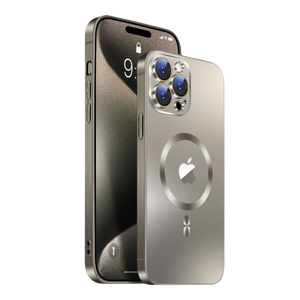
How not to run out of battery on your phone when you need it most 📲
Compartir
65% of iPhone users report feeling anxious if the charge percentage drops too low
Nobody likes to run out of battery on their phone. Before leaving the house it has become a ritual to check the phone's charge level or charge it a while before. So much so that 65% of users show such concern about the indicator emptying that they feel anxious . 30% only care if they are waiting for a call or have ordered a taxi and only 5% of the population cares about being cut off.
20% seems to be the battery limit under which users start to get nervous. Although when leaving home it usually goes at 100%, not everyone trusts that it will last the whole day: 23% carry an external battery, 21% activate the energy saving mode, 9% carry other devices that allow reversible charging and 7% put it in airplane mode at times. Besides, 23% of Spaniards always carry a charger with them and 34% in the car.
Throughout the day the battery wears down and, when it starts to get too low, 31% turn off their cell phone until the moment they have to use it ; 18% turn off data transfer, another 15% ask for a charger and a surprising 15% say they are buying a new phone.
Don't run out of battery at the worst moment
Although it may seem somewhat exaggerated, the truth is that running out of battery in certain situations can be a problem. 13% of those surveyed have had their phone turned off when they were in the middle of an important call, 11% missed an appointment because they could not notify them that they would be late or were left without a purchase at the supermarket because they could not pay, 9% % could not pay for the taxi for the same reason and 5% could not get on the plane or train because the battery ran out and they had money in digital format. To avoid this and not have to be aware of the percentage left on the phone, you can incorporate a few usage habits:
■ Do not frequently open applications that consume a lot of battery : In summer, the phone is used more intensively. Messaging applications, YouTube, social networks, games and video platforms are among those that demand the most battery life. Many models have the option to see in 'Settings', in the 'Battery' menu options, (they are usually the ones that use the microphone, the camera, the location...).
■ Adjust the screen brightness : It is one of the elements that uses the most battery. If it is not in automatic mode it is usually too high and the brighter the screen, the more power it consumes. It is advisable to keep it low (but so that you can see what is there) and raise it only when you are going to watch a video or play a video game.
■ Disable Bluetooth, GPS Wi-Fi and NFC if not used : These functions are working whenever they are active, so they use a lot of battery. In places where there is no Wi-Fi network to connect, it would be advisable to disable it, and the same applies to Bluetooth when not being used with headphones or similar, GPS when we are not using an application that requires geolocation, and contactless payment technology ( NFC). The most convenient thing is to have them in the quick menu so they can be activated and deactivated in an instant.
■ Reduce lock time : During the time that the screen is illuminated before locking, battery is wasted. In addition, when you put the phone in your bag or pocket you can accidentally activate an application or call someone, so it is advisable to set a few seconds from when the screen is not used until it is locked.
■ Reduce vibrations : You can set your phone not to vibrate if the volume is on; only when we activate silent mode.
■ Use dark themes whenever possible : More and more applications have a dark theme available. dark mode in which the background of the screen is black and the letters are white, and there are even phones that have this option for the home screen. For some people this option is more bothersome to the eyes and it is more difficult for them to read, but it saves battery.






